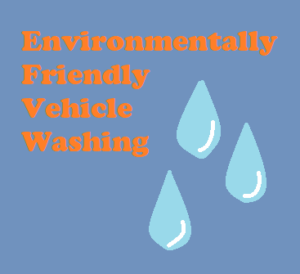Environmentally Friendly Vehicle Washing
 While you might think you save water washing your own vehicle, commercial vehicle washes really ration much more water. As a matter of fact, most commercial vehicle washes utilize 60% less water to clean your whole vehicle contrasted with just flushing (not in any event, cleaning) your vehicle at home.
While you might think you save water washing your own vehicle, commercial vehicle washes really ration much more water. As a matter of fact, most commercial vehicle washes utilize 60% less water to clean your whole vehicle contrasted with just flushing (not in any event, cleaning) your vehicle at home.
 Two Methods
Two Methods
Commercial vehicle washes save water in light of the fact that a significant number of them utilize two kinds of reusing frameworks — 100 percent shut circle frameworks and fractional reuse frameworks. Shut circle frameworks reuse 100 percent of the water used to wash and flush your vehicle, and fractional frameworks reuse just the wash water.
Other than reusing the water, commercial vehicle washes additionally have assimilation frameworks that keep the compound filled water from going into storm channels. At the point when you wash your vehicle at home, the sudsy water streams into neighboring channels that lead straightforwardly to lakes, waterways, and different streams. This spoiled water can then hurt marine natural life and water quality.
 Do It Yourself Washing
Do It Yourself Washing
Despite the fact that it’s ideal to utilize a commercial vehicle wash, the accompanying tips can assist you with saving water and forestall compound overflow at home.
- Utilize gathered water to wash your vehicle. (You can save around 1,300 gallons of water throughout the warm seasons by utilizing water to water plants, wash windows, and that’s just the beginning.)
- Make an honest effort to just utilize water-based, recyclable, and without phosphate cleansers.
- Rather than utilizing a customary hose to wash your vehicle, utilize a spray gun with a trigger to save water and lessening overflow.
- Flush your vehicle briefly a few times, rather than washing it once for a more drawn out timeframe. This will eliminate additional soil from your vehicle and save water.
- Wash your vehicle in a grassy region. Grass retains water to keep away from however much water overflow is expected.
- When done, empty your water-filled containers into your latrine or sink.
